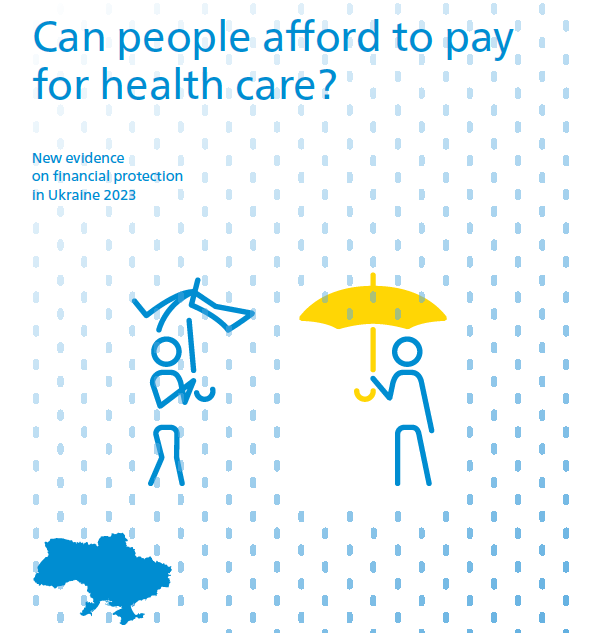Catastrophic health spending means a household can no longer afford to meet its basic needs – food, housing and electricity – because of having to pay out of pocket for health care. In Ukraine, households with catastrophic health spending are mainly those with low incomes and those headed by pensioners or in rural areas.
The new WHO/Europe report, “Can people afford to pay for health care? New evidence on financial protection in Ukraine”, shows that financial hardship due to out-of-pocket payments is almost entirely driven by spending on medicines and inpatient care. Medicines are the main driver in poorer households and inpatient care in wealthier households. Inpatient care plays a much larger role in driving catastrophic health spending in Ukraine than in most other countries in the European Region.
Overview
As WHO described here, this review is part of a series of country-based studies generating new evidence on financial protection – affordable access to health care – in health systems in Europe. It updates an analysis of financial protection in Ukraine published in 2018. Financial protection is central to universal health coverage and a core dimension of health system performance.
The incidence of catastrophic health spending is higher in Ukraine than in many other countries in Europe. It is heavily concentrated in the poorest fifth of the population and among households headed by older people or pensioners. The main drivers of catastrophic spending are medicines in poorer households and inpatient care in richer households.
Unmet need for health care is highest for medicines, dental care and outpatient care, mainly driven by cost and affects poorer households the most. In spite of near universal population coverage and the limited presence of user charges, informal payments and other out-of-pocket payments are widespread in the health system, reflecting gaps in the service dimension of health coverage, low levels of public spending on health (persistent underfunding of the Program of Medical Guarantees) and other inefficiencies.
Although the Government has taken steps to strengthen access and financial protection, as demonstrated by recent reforms, and given priority to public spending on health, the health system needs to continue to reduce out-of-pocket payments for medicines and inpatient care.
Options for achieving this include prioritizing public spending on comprehensive primary care, which includes funding for better access to medicines and diagnostic tests; strengthening the prescribing, dispensing, price regulation and availability of medicines; tackling informal payments for inpatient care; improving the ability of the National Health Service of Ukraine to use public resources efficiently; and enabling the Government to implement policies to enhance protection for households with low incomes and others at high risk of catastrophic health spending.
About the report
The report draws on data from household budget surveys conducted between 2009 and 2021 and information on coverage policy (population coverage, service coverage and user charges) up to the end of 2022. It assesses the state of financial protection in Ukraine before the Russian Federation’s full-scale invasion in February 2022. Ukraine is one of the few countries in the European Region providing evidence on financial protection up to 2021.
About WHO/Europe’s work on financial protection
Financial protection is central to universal health coverage. It is an indicator of the Sustainable Development Goals, part of the European Pillar of Social Rights and at the heart of the European Programme of Work, WHO/Europe’s strategic framework.
WHO/Europe monitors financial protection through the WHO Barcelona Office for Health Systems Financing, using regional indicators that are sensitive to equity. The WHO Barcelona Office provides tailored technical assistance to countries to reduce unmet need and financial hardship by identifying and addressing gaps in health coverage.


